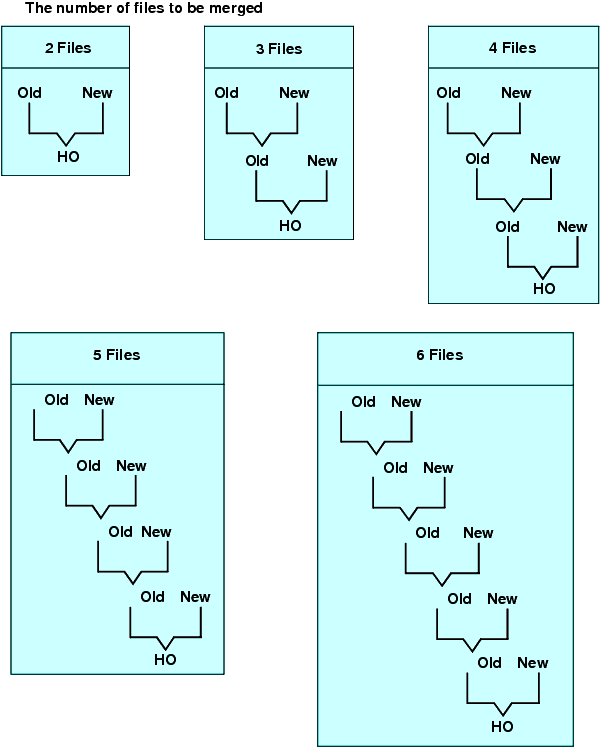Specifies how the retrieved records from the files
are to be compared.
The results of each phrase are
graphically represented using Venn diagrams. In the diagrams, the
left circle represents the old data source, the right circle represents
the new data source, and the shaded areas represent the data that
is written to the HOLD file.
OLD-OR-NEW specifies
that all records from both the old data source and the new data
source appear in the HOLD file. This is the default if the AFTER
MATCH line is omitted.

OLD-AND-NEW specifies
that records that appear in both the old and new data sources appear
in the HOLD file. (The intersection of the sets.)

OLD-NOT-NEW specifies
that records that appear only in the old data source appear in the
HOLD file.

NEW-NOT-OLD specifies
that records that appear only in the new data source appear in the
HOLD file.

OLD-NOR-NEW specifies
that only records that are in the old data source but not in the
new data source, or in the new data source but not in the old, appear
in the HOLD file (the complete set of non-matching records from
both data sources).

OLD specifies
that all records from the old data source, and any matching records
from the new data source, are merged into the HOLD file.

NEW specifies
that all records from the new data source, and any matching records
from the old data source, are merged into the HOLD file.








